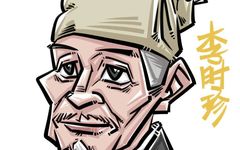
“New Perspectives on Traditional Chinese Medicine” series articles are not purely theoretical knowledge of TCM, but rather interpretations of dietary therapy and food-medicine homology ingredients from modern scientific and nutritional perspectives, aiming to broaden horizons, expand thinking, and inspire wisdom, providing new perspectives and ideas for understanding the wisdom of ancient people.
When it comes to ginger, everyone should be familiar with it.
Who doesn’t keep a few pieces of fresh ginger in their kitchen?
Today, we will discuss ginger, but not the fresh ginger commonly used in cooking and soups, but rather dried ginger.
So the question arises: “What is dried ginger? Is it just fresh ginger that has been dried?”
Not quite.
Fresh ginger and dried ginger are not merely distinguished by “fresh” and “dried”.
To clarify the various “entanglements” between fresh ginger and dried ginger, we must start with the history of ginger.
As a food-medicine homology ingredient, ginger has a long history in China. Records of ginger can be found as early as in the “Analects” and the “Huangdi Neijing”.
In the 20th century, excavations at the Mawangdui Han tomb not only unearthed ginger but also a record of its uses in the “Fifty-Two Diseases Formulas”.
Before and around the time of the publication of the “Shennong Bencao Jing”, ginger was already being used as a traditional Chinese medicine, although the distinction between dried ginger and fresh ginger was not yet precise. There were instances of mixing fresh and dried ginger.
It wasn’t until the end of the Eastern Han Dynasty, with the publication of the “Shanghan Lun” and the “Jinkui Yaolue”, that TCM prescriptions clearly distinguished between fresh ginger and dried ginger. For example, formulas like “Shengjiang Banxia Tang” (Fresh Ginger and Pinellia Decoction), “Gancao Ganjiang Tang” (Licorice and Dried Ginger Decoction), and “Danggui Shengjiang Yangrou Tang” (Angelica and Fresh Ginger Lamb Soup) specified whether to use “dried ginger” or “fresh ginger”. Although there was a distinction in the formulas, fresh ginger was not recorded as a single medicinal ingredient at that time.
During the Southern and Northern Dynasties, Tao Hongjing listed fresh ginger as a separate medicinal ingredient in the “Mingyi Bielu” and detailed its uses.
At the same time, Tao Hongjing also recorded the processing method of dried ginger in another book, “Bencao Jing Jizhu”: “To make dried ginger: soak in water for three days, peel, place in running water for six days, scrape off the skin, then dry in the sun, and place in a porcelain jar for fermentation for three days, and it is done.”
This means that until this point, the “raw material” used to make dried ginger was still fresh ginger. Both dried ginger and fresh ginger originated from the fresh rhizome of ginger, with dried ginger being the medicinal form obtained after processing fresh ginger.
Now, here comes the key point!
In the Ming Dynasty, Li Shizhen emerged.
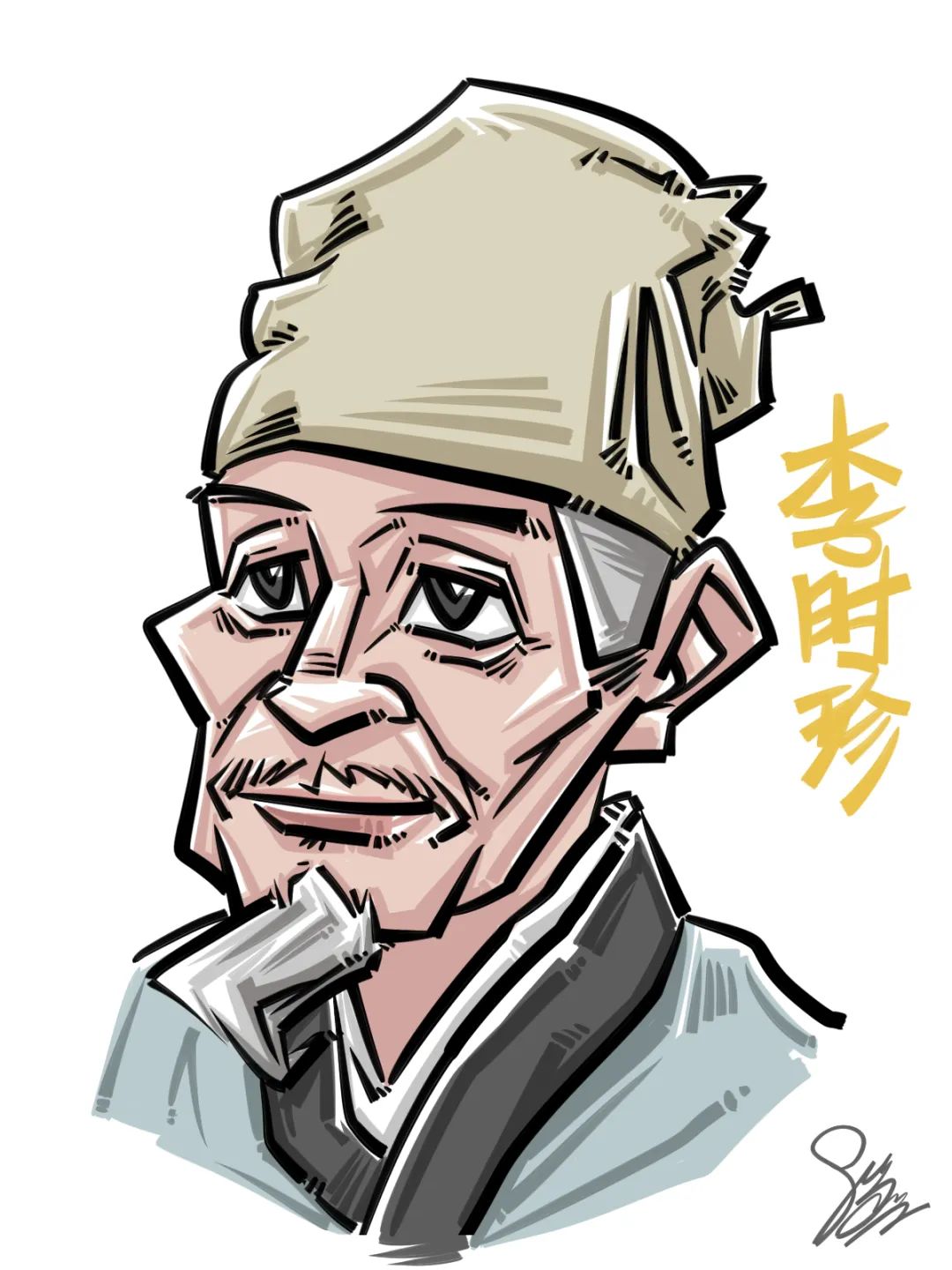
◎ Eight-year-old hand-drawn
Regarding fresh ginger and dried ginger, Li Shizhen proposed his own insights, which directly or indirectly influenced the subsequent development of herbal medicine and are still widely recognized in the industry today.
What did Li Shizhen say?
Li Shizhen believed: “Dried ginger is made from mother ginger.”
This means that dried ginger is not made from ordinary fresh ginger, but from sun-dried mother ginger.
What is “mother ginger”?
“Mother ginger” refers to last year’s old ginger, which is planted in the ground in spring. The mother ginger sprouts underground, producing new rhizomes, which are called “fresh ginger”.
In Zhang Xichun’s “Medical Record of Chinese and Western Medicine”, it is recorded: “Fresh ginger is planted in the ground, harvested in autumn, peeled, and dried to make dried ginger; the buds that grow from the ginger are planted in the ground, and the ginger produced that year is fresh ginger. Therefore, dried ginger is from mother ginger, and fresh ginger is from young ginger, with dried ginger being older and fresh ginger being younger.”
Thus, we can clarify that fresh ginger is young ginger, and dried ginger comes from mother ginger.
Having clarified the “historical context” of dried ginger, I believe everyone now has a certain understanding of dried ginger and fresh ginger.
Next, we will detail the properties of dried ginger.
Warming the Interior and Dispelling Cold, Used for Spleen and Stomach Cold Syndrome
We all know that dried ginger is classified as a warming interior medicine.
“Warming the interior” means to help the body rid itself of the invasion of cold evil and become “warm”.
So, when do we need to “warm the interior”?
It’s simple: when the body exhibits “interior cold syndrome”.
In TCM, “interior cold syndrome” commonly manifests in two aspects: one is spleen and stomach deficiency cold syndrome, and the other is heart and kidney yang deficiency or even yang collapse syndrome.
We will discuss yang collapse syndrome in detail later. For now, let’s talk about dried ginger and spleen and stomach deficiency cold syndrome.

◎ Image authorized by Baotu Network
TCM believes that dried ginger is pungent, warm, and dry, “mainly entering the spleen and stomach, excelling at warming the interior and dispelling cold, and invigorating spleen yang”, which greatly aids in warming the middle jiao.
According to ancient texts, as long as there is spleen and stomach cold syndrome, whether it is “exterior cold invading the interior” or “spleen yang deficiency”, dried ginger may be used. From the perspective of symptoms, any manifestation of cold in the spleen and stomach, whether it is pain, distension, reduced appetite, indigestion, diarrhea, or nausea and vomiting, can be treated with it.
In ancient times, people often used dried ginger decocted alone or ground into powder and taken with rice soup to regulate spleen yang deficiency diarrhea.
From a modern scientific perspective, spleen and stomach deficiency cold syndrome is similar to digestive tract diseases such as ulcers and gastrointestinal disorders.
Anti-Ulcer
To explore the protective effects of dried ginger on the gastric mucosa, researchers established multiple models of gastric ulcers. Studies found that dried ginger extract can effectively protect damaged gastric mucosa, and after using dried ginger, the ulcer index decreases, confirming that dried ginger extract has good anti-ulcer activity.
Various extracts of dried ginger have a certain degree of influence on gastrointestinal status. Dried ginger ether extract can combat various forms of gastric ulcers caused by water immersion stress, while dried ginger aqueous extract can counteract pyloric ligation-induced ulcers. Dried ginger alcohol extract can protect against gastric mucosal damage caused by water immersion stress, anhydrous ethanol, and pyloric ligation-induced gastric ulcers, demonstrating good anti-ulcer capabilities, possibly related to enhancing gastric mucosal defense.
In-depth studies on the anti-ulcer effects of dried ginger have revealed that its mechanism may be related to stimulating the synthesis and release of endogenous gastric protease with cell-protective capabilities.
Additionally, the anti-ulcer properties of dried ginger may also be achieved by reducing plasma levels of GAS, IL-1, and TNF-α, while increasing plasma levels of COX-2 and PGE2.
Regulating Gastrointestinal Status, Improving Gastrointestinal Disorders
The reason dried ginger is effective in improving gastrointestinal disorders is closely related to its bidirectional regulatory capabilities.
Studies show that when gastrointestinal activity is abnormal, dried ginger will either inhibit or stimulate based on the specific manifestations.
Researchers found that dried ginger extract can promote gastric emptying and has a good effect on accelerating gastric emptying slowed by certain chemical agents, which may be related to cholinergic M receptors.
Dried ginger contains aromatic volatile oils, which have a mild stimulating effect on the digestive tract, enhancing intestinal tension, rhythm, and peristalsis, thereby promoting digestive function.
Some scholars observed the effect of dried ginger extract on bile secretion using a bile duct cannulation method and found that dried ginger extract can regulate bile secretion, thereby improving digestive capacity.
Furthermore, the warming and dispelling cold properties of dried ginger may also be related to its improvement of blood rheological indices in cold stomach models and enhancement of thyroid function. Dried ginger extract can improve mesenteric microcirculation, thus exerting its warming and blood-activating effects, and can also regulate cAMP/cGMP stability by increasing intracellular adenosine cyclase and cAMP levels while decreasing phosphodiesterase levels, thereby treating the cold syndrome of the stomach.
When using dried ginger to regulate cold evil invading the stomach, abdominal pain, nausea, and vomiting, it is often combined with Gaoliang ginger and Banxia as warming and descending anti-nausea herbs;
when regulating spleen and stomach deficiency cold, abdominal cold pain, reduced appetite, and loose stools, it is commonly used with qi-invigorating and spleen-strengthening herbs.
Returning Yang and Unblocking Meridians, Used for Yang Collapse Syndrome
Yiru first heard the term “returning yang” in a martial arts novel.
At that time, Yiru was still young and had not yet been exposed to medicine. Seeing that a certain “martial art” or “elixir” in the novel could “return yang” seemed magical.
At that time, Yiru wanted to know what this “medicine in the gourd” was.
It wasn’t until she grew up and encountered medicine that she gradually unveiled the mysterious veil of “returning yang”.
Returning yang, as the name suggests, means reviving the weakened yang energy.
When is it necessary to return yang?
In cases of yang collapse.
When yang energy is about to “perish”, when it is lost, when it is missing, it is crucial to quickly “find back” the yang energy.
Yang Collapse Syndrome
Yang collapse syndrome refers to the extreme weakness of yang energy in the body, leading to potential loss, primarily manifested by cold sweat, cold limbs, pale face, and weak pulse.
Yang collapse syndrome often presents as: profuse cold sweat, thin and pale sweat, pale complexion, cold hands and feet, cool skin, lethargy, weak breathing, pale and moist tongue, and a pulse that is weak and nearly absent.
In TCM, there are two typical herbs used for “returning yang”: one is Fuzi, and the other is dried ginger.
Both are used for “returning yang”, but what are the differences?
Fuzi focuses on “returning yang to rescue from collapse”, while dried ginger focuses on “returning yang and unblocking meridians”.
Let’s take a look at the typical symptoms of yang collapse syndrome.
First, the limbs are cold. When kidney yang is weak, the hands and feet will feel cold, and at this time, Fuzi is more targeted, helping to enhance the yang energy in the kidney and return yang to rescue from collapse.
On the other hand, dried ginger primarily invigorates the yang energy of the heart, mainly improving the symptom of weak pulse, hence the term returning yang and unblocking meridians.
So, how does dried ginger perform “returning yang and unblocking meridians” in the body?
From a modern scientific perspective, we find that heart and kidney yang deficiency or even yang collapse syndrome is similar to heart failure or shock in modern medicine.
Dried ginger can exert its “returning yang and unblocking meridians” effect by regulating the cardiovascular system.
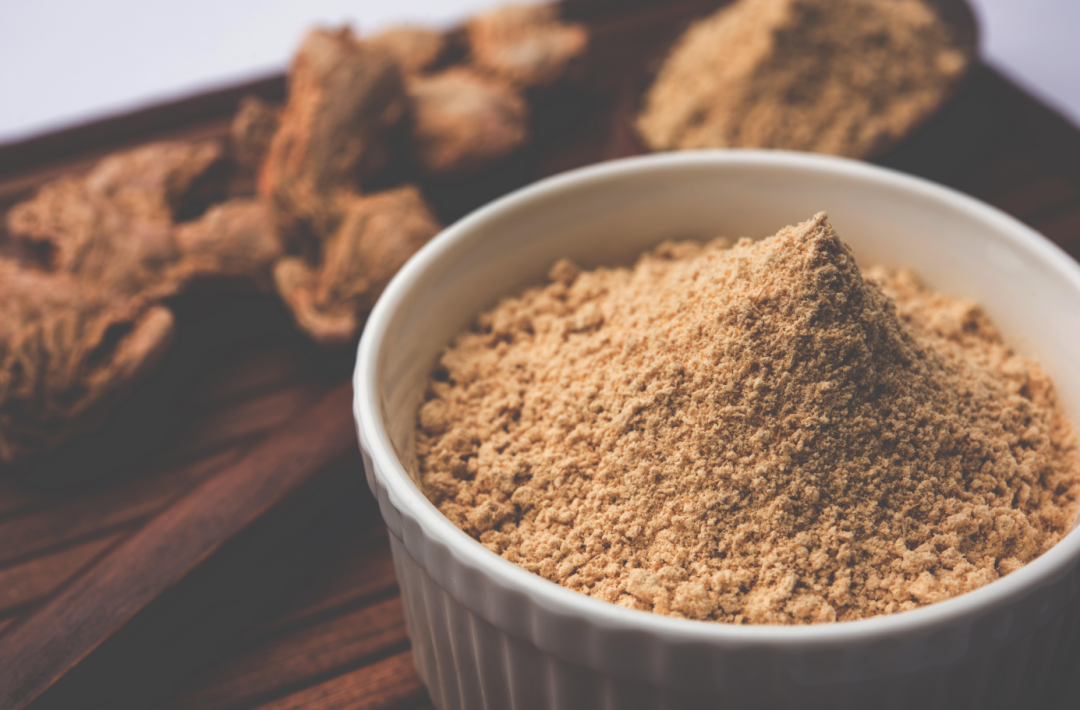
◎ Image authorized by Baotu Network
Anti-Arrhythmia
Researchers have created various models of arrhythmia using chemical drugs to observe the antagonistic ability of dried ginger extract against arrhythmia.
Research results show that dried ginger extract has a certain anti-arrhythmic ability. The mechanisms of the arrhythmia models created by researchers vary, yet dried ginger extract has a regulatory effect on arrhythmias caused by different mechanisms, indicating that its anti-arrhythmic capabilities are quite certain.
Improving Cardiac Status
For higher animals, the heart is a very important organ in the circulatory system.
The heart pumps blood, providing pressure for blood flow, supplying sufficient blood flow to organs and tissues, delivering oxygen and various nutrients, and removing metabolic waste, thus maintaining normal metabolism.
To put it vividly, the heart is like a “super pump” inside the body.

◎ Image authorized by Baotu Network
You might not imagine how much work this fist-sized “super pump” does.
It beats at least 60 times per minute, pumping about 5000cc of blood. This blood travels through approximately 100,000 kilometers of blood vessels, supplying ample oxygen and nutrients to body cells.
Assuming we start counting from the birth of a small life, for an average lifespan of 80 years, this “super pump” needs to beat at least 2.5 billion times.
It is easy to imagine the fatal impact on the body if this “pump” fails and stops working.
With advancements in technology, people now use complex instruments and techniques to monitor and “repair” the heart.
However, in ancient times, when science was not developed, TCM practitioners had already begun to explore how to maintain and repair the heart.
In this regard, the “returning yang and unblocking meridians” effect of dried ginger cannot be overlooked.
Research shows that dried ginger extract can help enhance myocardial contraction and relaxation, improving the cardiac status of heart failure rabbits, thereby alleviating heart failure symptoms and exerting regulatory effects.
Researchers created a heart failure model in rats using a tracheal occlusion method after cardiac arrest and cardiopulmonary resuscitation to study the effects of dried ginger decoction on angiotensin, serum tumor necrosis factor α, malondialdehyde, and nitric oxide in these rats. The results showed that dried ginger decoction has certain regulatory capabilities on these parameters in rats with acute myocardial ischemia.
This also means that dried ginger can exert its “returning yang and unblocking meridians” effect by improving cardiac performance and alleviating acute myocardial ischemia and hypoxia.
Improving Blood Circulation
There is a term that everyone is familiar with: thrombosis.
The presence of a thrombus is like implanting a time bomb inside the body, which can “explode” at any time and anywhere.
For example, when an arterial thrombus does not completely block the lumen, it can cause local ischemic necrosis, such as myocardial infarction caused by coronary artery thrombosis; if it blocks a vein without establishing proper collateral circulation, it can lead to local congestion, bleeding, or even necrosis, such as mesenteric venous thrombosis causing intestinal ischemic necrosis.
When a thrombus detaches, it forms an embolus, which “travels” through the blood vessels in the body. If it encounters a narrow area, it can get stuck there, blocking the blood vessel. Thrombi formed on heart valves are particularly prone to detachment and becoming emboli.
Research shows that the aqueous extract and volatile oil of dried ginger have the ability to inhibit platelet aggregation and prevent thrombus formation.
Norepinephrine is a platelet aggregating agent that can rapidly promote platelet aggregation. Studies indicate that dried ginger has a certain inhibitory effect on norepinephrine-induced platelet aggregation, and the strength of inhibition is dose-dependent.
Additionally, researchers have found that certain components in dried ginger have good inhibitory effects on adenosine diphosphate, arachidonic acid, epinephrine, and collagen-induced platelet aggregation, capable of inhibiting platelet cyclooxygenase activity and thromboxane synthesis.
Anti-Hypoxia
When we find that a person’s heart has suddenly stopped, our first reaction is often to perform cardiopulmonary resuscitation.
It is important to know that when the heart stops beating, the internal “pump” has stopped, and the blood flow in the body is in a state of “interrupted flow”. At this time, all cells and organs in the body are somewhat in a state of hypoxia. Even if the heart resumes beating later, the hypoxic process can still cause some degree of damage to the body.
For example, brain cells are particularly sensitive to hypoxia; if blood flow is interrupted for just a few seconds, the brain may lose consciousness; if the interruption lasts longer than five minutes, brain cells may undergo irreversible death; if the interruption continues for even longer, more severe consequences may occur.
Therefore, during cardiopulmonary resuscitation, artificial respiration is an essential step. By using the rescuer’s breath, air is passively blown into the alveoli, allowing for intermittent expansion of the lungs to maintain alveolar ventilation and oxygenation, thereby reducing tissue hypoxia and carbon dioxide retention.
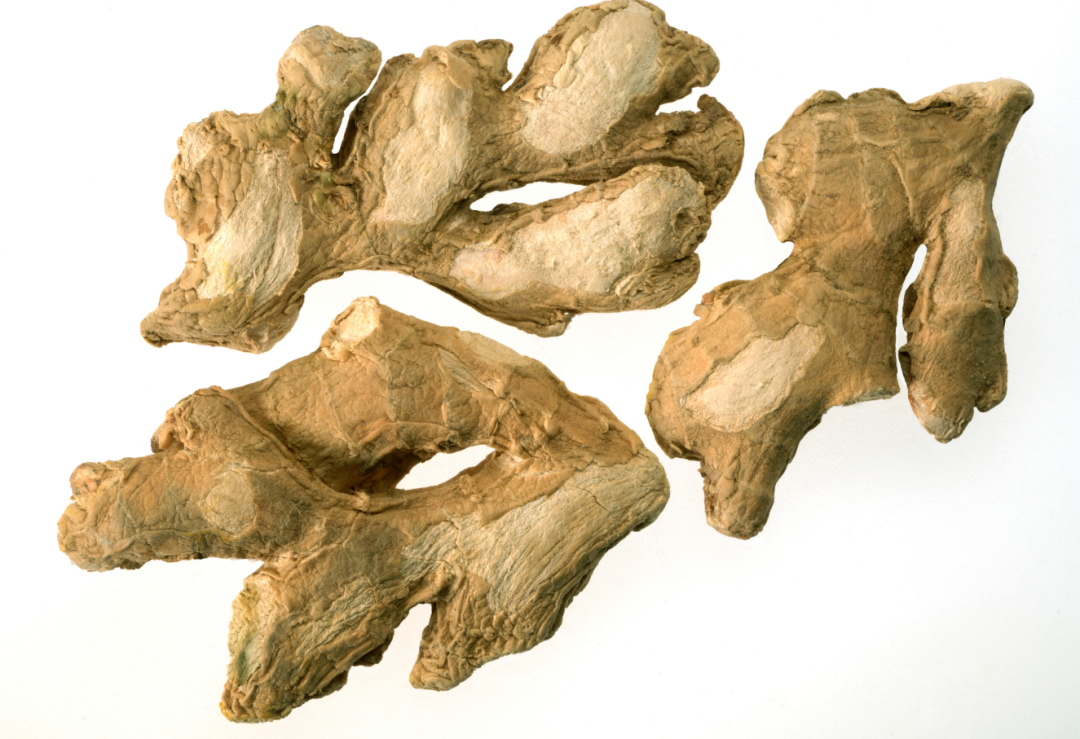
◎ Image authorized by Baotu Network
Dried ginger also performs well in this regard.
While “returning yang and unblocking meridians”, dried ginger also “fights against hypoxia”, striving to minimize the damage caused by hypoxia to the body.
Research shows that dried ginger extract has anti-hypoxia capabilities, with citral being one of its main components, and its mechanism may involve slowing the body’s oxygen consumption rate to combat hypoxia.
Researchers have also studied the protective ability of dried ginger against hypoxic and hypoglycemic damage to myocardial cells, and the results indicate that dried ginger can regulate the release of lactate dehydrogenase, thereby reducing cellular damage.
When using dried ginger to regulate yang collapse syndrome characterized by profuse cold sweat, cold limbs, and weak pulse, it is often combined with Fuzi to enhance efficacy and reduce toxicity.
Fresh Ginger and Dried Ginger
At the beginning of the article, we traced the relationship between fresh ginger and dried ginger through history.
So what are the differences in traditional applications and pharmacological effects?
There is a saying about fresh ginger and dried ginger: “Fresh ginger moves but does not guard, dried ginger can move and guard.”
Fresh Ginger
Releases the exterior, warms the interior to stop vomiting, warms the lungs to transform phlegm, and resolves fish and crab toxins.
Fresh ginger can dispel wind and cold, commonly used for symptoms such as chills and fever, headache, and nasal congestion caused by wind-cold evil;
Fresh ginger can stop vomiting, used for various types of vomiting due to stomach cold;
Fresh ginger can transform phlegm and stop cough, used for cough due to cold phlegm;
Fresh ginger can be used to resolve fish and crab toxins.
Dried Ginger
Warms the interior and dispels cold, returns yang and unblocks meridians, warms the lungs to transform phlegm.
Dried ginger can warm the interior and dispel cold, used for spleen and stomach deficiency cold syndrome;
Dried ginger can return yang and unblock meridians, used for symptoms of weak pulse and cold limbs due to yang collapse syndrome;
Dried ginger can warm the lungs and transform phlegm, used for cough due to cold phlegm.
From the above content, it is not difficult to see that both fresh ginger and dried ginger can warm the interior, but dried ginger is stronger in potency.
If dried ginger dispels cold is likened to warming through “flames”, then fresh ginger dispels cold is more like warming through “warm winds”.
TCM believes that compared to dried ginger, fresh ginger has the ability to stop vomiting, which dried ginger does not possess.
Researchers have conducted comparative studies on the pharmacological effects of fresh ginger and dried ginger, and the results show that fresh ginger is stronger than dried ginger in stopping vomiting, relieving heat, and detoxifying.
Researchers believe that this difference in potency may be due to the significant loss of volatile oil content during the drying process of dried ginger. The amount of volatile oil affects its abilities to stop vomiting and induce sweating to relieve heat.
Additionally, the pungent components of fresh ginger, such as gingerol and shogaol, have the ability to inhibit the vomiting center, which has been confirmed in vitro. The instability of gingerol compounds has been shown, with 6-gingerol being present in higher amounts in fresh ginger than in dried ginger, which may also explain why fresh ginger is more adept at stopping vomiting.
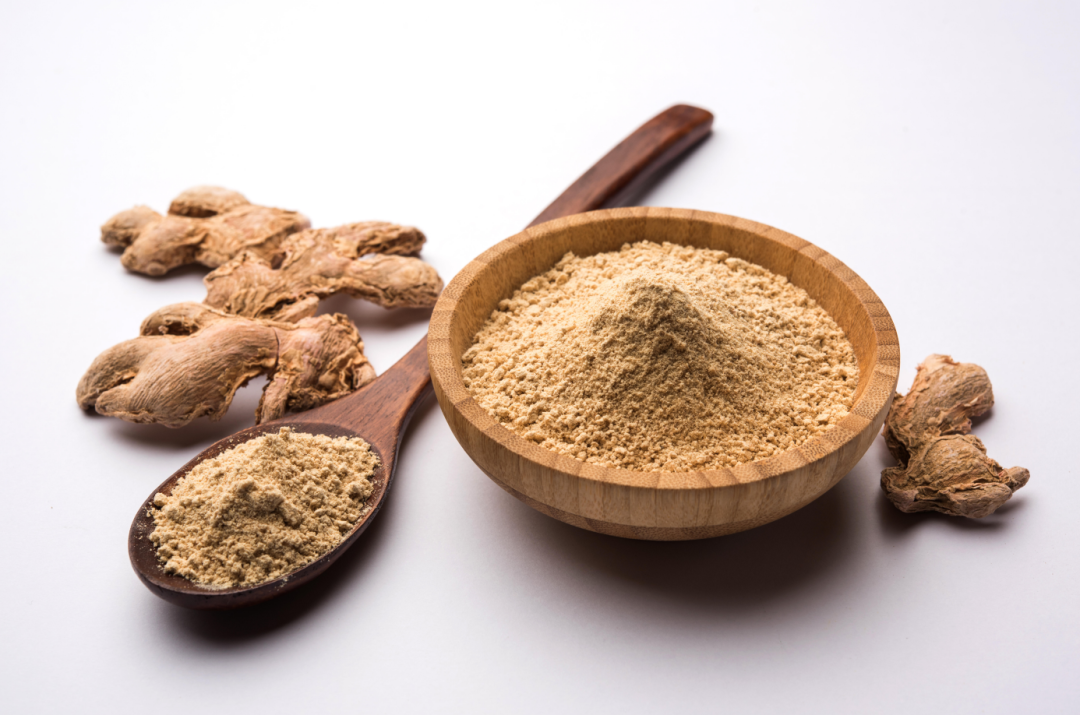
◎ Image authorized by Baotu Network
In addition to the aforementioned components, fresh ginger and dried ginger also differ in their chemical compositions.
Researchers have measured their components and found that dried ginger has 9 components not detected in fresh ginger, while fresh ginger has 2 components not found in dried ginger.
Furthermore, researchers have discovered that fresh ginger contains a greater variety of gingerols, while dried ginger primarily contains diacetoxy-6-gingerol, but the gingerol content in dried ginger is higher than that in fresh ginger.
The differences in medicinal properties between fresh ginger and dried ginger are also related to the content of sesquiterpenes. Modern research has found that the higher the content of sesquiterpenes, the more warming the medicinal properties tend to be; conversely, if there are few or no sesquiterpenes, the medicinal properties tend to be cold.
According to GC-MS analysis, the content of sesquiterpenes in dried ginger is higher than that in fresh ginger.
It is precisely for this reason that fresh ginger focuses more on dispelling wind and cold, regulating wind-cold colds; while dried ginger focuses more on returning yang and unblocking meridians, used for yang collapse syndrome with weak pulse.
This distinction in usage is crucial, and one must not confuse the two.
Consumption of Dried Ginger
If we want to consume some dried ginger in our daily lives, we can choose to grind it into powder for seasoning or cook it in dishes.
✿ Dried Ginger Porridge
Take 3 grams of dried ginger and an appropriate amount of japonica rice, and cook it into porridge.
This porridge helps regulate gastric acid cold pain.
It is important to note that dried ginger should not be consumed in excess. It is not suitable for those with yin deficiency and excess heat, blood heat and bleeding, or pregnant women.

◎ Image authorized by Baotu Network
People often say, “Ginger is still better when it’s older.”
Little do they know, both old ginger and young ginger have their own advantages and uses.
After all, the saying goes, “The waves behind push the waves in front; heroes emerge from the youth!”
Do not blindly trust authority, do not underestimate yourself, and do not doubt yourself because of your temporary obscurity.
Life is only once; we should live it to the fullest!
[References]
1. Wang Huanhuan, Guo Qin, Peng Gaoqiang, etc. Research on the source, efficacy and usage of ginger and dried ginger based on ancient books. Journal of Changchun University of Traditional Chinese Medicine, 2022.
2. Li Xing, Ao Mingyue, Luo Ting, etc. The processing history of ginger and the modern research progress of processed products. Journal of Chengdu University of Traditional Chinese Medicine, 2021.
3. Preparative separation and purification of gingerols from ginger (Zingiber officinale Rosc.) by high-speed counter-current chromatography. Food Chemistry, 2010.
4. Zhang Lu, Wang Jian, Zhao Yanling. Pharmacological research progress on the compatibility of aconite and dried ginger. Evaluation and Analysis of Drug Use in Chinese Hospitals, 2018.
5. Li Lingling, Cui Can, Wang Zheng, etc. The origin of ginger. Chinese Medicine Journal, 2018.
6. Qi Xue, Zhang Yingying. The chemical and pharmacological research progress of dried ginger. Shandong Chemical Industry, 2018.
7. Characterization of gingerol-related compounds in ginger rhizome (Zingiber officinale Rosc.) by high-performance liquid chromatography/electrospray ionization mass spectrometry. Mass Spectrom, 2005.
8. Sun Quan. An experimental study on the chemical constituents of dried ginger and its pharmacological effects. China Medical University, 2018.
9. Chen Min, Ma Weiqi. A brief analysis of “dried ginger warms and burns”. Asia Pacific Traditional Medicine, 2017.
10. Chen Liming. Study on the body factors of ginger dose-effect relationship and differences in human drug response. Beijing University of Traditional Chinese Medicine, 2016.
11. Cardiovascular effects of ginger aqueous extract and its phenolic constituents are mediated through multiple pathways. Vascular Pharmacology, 2005.
12. Wang Hengjie. Study on the effect of dried ginger on rats with Hanyin Accumulating Lung syndrome and its tissue distribution. Henan University of Traditional Chinese Medicine, 2016.
13. Zhou Jing, Yang Weiping, Li Yinglong, etc. Effects of dried ginger decoction on hemodynamics in rats with acute heart failure. Shi Zhen Chinese Medicine and Chinese Medicine, 2011.
14. Wang Wenxin. Analysis of chemical, pharmacological and clinical application characteristics of dried ginger. Chinese Medicine Clinical Research, 2016.
15. Protective effect of ginger, Zingiber officinale Rosc on experimental atherosclerosis in rabbits. Indian journal of experimental biology, 2004.
16. Minglu, Chen Yanfen, Tang Chunping. Chemical constituents, pharmacological effects and clinical research progress of Wenli medicine. Journal of Guangdong University of Pharmacy, 2016.
17. Sun Fengjiao, Li Zhenlin, Qian Shihui, etc. Research progress on chemical constituents and pharmacological effects of dried ginger. China Wild Plant Resources, 2015.
18. Long Quanjiang, Xu Xueqin. Literature analysis on chemical constituents, pharmacological effects and processing of dried ginger. Modern Chinese Medicine Research and Practice, 2015.
19. Natural pungent compounds: IV. Examination of the gingerols, shogaols, paradols and related compounds by thin-layer and gas chromatography. Journal of Chromatography A, 1972.
20. Zhou Jing, Yang Weiping, Li Yinglong, etc. Effects of dried ginger water decoction on plasma angiotensin Ⅱ, serum tumor necrosis factor α, malondialdehyde and nitric oxide in rats with acute myocardial ischemia. Shi Zhen Chinese Medicine and Chinese Medicine, 2014.
21. Yao Dongyun, Liu Yongqin, Liu Shuyan, etc. Discuss the difference between ginger and dried ginger. Chinese Rural Medicine, 2011.
22. Han Yanquan, Hong Yan, Jiang Lei, etc. Research progress in processing, quality control and pharmacology of ginger. Modern Chinese Medicine in China, 2011.
23. Zhou Jing. An experimental study on the efficacy of the pungent-heat medicine dried ginger for Huiyang and Tongmai. Guiyang College of Traditional Chinese Medicine, 2011.
24. Treating Pregnancy-Related Nausea and Vomiting with Ginger. Annals of Pharmacotherapy, 2005.
25. Yang Cong Yong. Briefly describe the clinical application of dried ginger. Sichuan Traditional Chinese Medicine, 2008.
26. Camp gift. Research progress on chemical constituents and pharmacological effects of dried ginger. Chinese Pharmacy, 2008.
27. Che Min. Compatibility, application and pharmacological research of traditional Chinese medicine dried ginger. Gansu Science and Technology, 2007.
28. Wang Jinhua, Xue Baoyun, Liang Aihua, etc. Comparative study on the pharmacological activities of ginger and dried ginger. Chinese Journal of Pharmacy, 2000.
29. Zhou Jing, Yang Weiping. Clinical application and pharmacological research progress of dried ginger. Yunnan Journal of Traditional Chinese Medicine, 2011.
30. Li Sumin, Yang Xiuling, Zhao Zhi, etc. Advances in pharmacological research of dried ginger and ginger. Chinese Herbal Medicine, 1999.
31. Yao Xiujuan, Chi Liqun, Yao Guojie, etc. Effects of dried ginger alcohol extract on the contraction of isolated ileum of guinea pigs. Northwestern Journal of Pharmacy, 1994.
32. Zhang Mingfa, Duan Jingyun, Shen Yaqin, etc. Pharmacological research on “warming and relieving pain” of dried ginger. Chinese Medicine Research, 1992.
Classic knowledge is passed down with heart, and experience is verified from “new”. This is the New Perspectives on Traditional Chinese Medicine column, bringing you from life into science, from TCM to the world. If you would like to learn more about other food-medicine homology ingredients, feel free to leave us a message!
— THE END —
Related Articles Review
☀People with thyroid issues need to pay attention to this ingredient!
☀The “ginseng” on the dining table can regulate the “evil qi of the five organs”!
☀With autumn dryness upon us, have you eaten this fruit that moistens dryness and prevents dryness from harming the lungs?
For more related articles, please search within the public account.
☀Article Search Guide
❃Article by Yiru
❃Editor: Yiru
❃Proofreader: Ziye
❃All images in the text are credited; please do not use without authorization.

